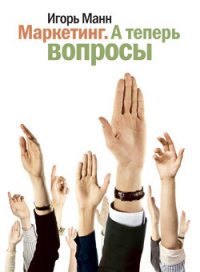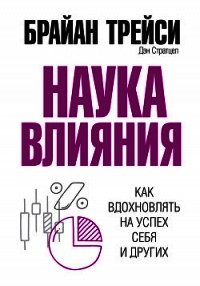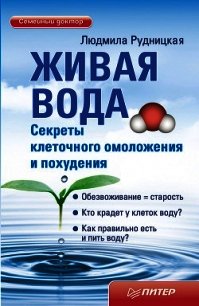Секреты лаборатории питания. Наука похудения, мифы о силе воли и пользе диет - Манн Трейси "Неизвестный автор"
54. Se-Jin Lee, “Regulation of Muscle Mass by Myostatin”, Annual Review of Cell and Developmental Biology 20 (January 8, 2004): 61-86, doi: 10.1146/annurev.cellbio.20.012103.135836.
55. Frank Bruni, “These Wretched Vessels”, New York Times, December 24, 2012.
1. Четкая позиция по данному вопросу сформулирована в работе: Amy Luke and Richard S. Cooper, “Physical Activity Does Not Influence Obesity Risk: Time to Clarify the Public Health Message”, International Journal of Epidemiology 42, no. 6 (December 1, 2013): 1831-36, doi:10.1093/ije/dytl59. Для ознакомления с противоположной точкой зрения см.: James О. Hill and John С. Peters, “Commentary: Physical Activity and Weight Control”, International Journal of Epidemiology 42, no. 6 (December 1, 2013): 1840-42, doi: 10.1093/ije/dytl61.
2. Один из девяти фактов об ожирении, представленных в работе: Casazza et al., “Myths, Presumptions, and Facts about Obesity”.
3. Petra Stiegler and Adam Cunliffe, “The Role of Diet and Exercise for the Maintenance of Fat-Free Mass and Resting Metabolic Rate during
Weight Loss”, Sports Medicine (Auckland, NZ) 36, no. 3 (January 2006): 239-62.
4. N. A. King et al., “The Interaction between Exercise, Appetite, and Food Intake: Implications for Weight Control”, American Journal of Lifestyle Medicine 7, no. 4 (February 6, 2013): 265-73, doi: 10.1177/1559827613475584; Catia Martins et al., “Effects of Exercise on Gut Peptides, Energy Intake and Appetite”, Journal of Endocrinology 193, no. 2 (May 1, 2007): 251-58, doi:10.1677/JOE-06-0030.
5. Carolina О. C. Werle, Brian Wansink, and Collin R. Payne, “Just Thinking about Exercise Makes Me Serve More Food: Physical Activity and Calorie Compensation”, Appetite 56, no. 2 (April 2011): 332-35, doi: 10.1016/j.appet.2010.12.016.
6. 150 минут тренировок средней интенсивности (или 75 минут тренировок высокой интенсивности) в неделю рекомендованы для поддержания здоровья, для похудения же надо заниматься спортом по 300 минут в неделю при средней интенсивности (или по 150 при высокой). U.S. Department of Health and Human Services, “2008 Physical Activity Guidelines for Americans”, http://www.health. gov/paguidelines/.
7. Этот вывод следует из анализа 80 экспериментов, в которых участвовало более миллиона человек. Примерно в половине исследований особое внимание уделялось контролю массы тела. Guenther Samitz, Matthias Egger, and Marcel Zwahlen, “Domains of Physical Activity and All-Cause Mortality: Systematic Review and Dose-Response Meta-Analysis of Cohort Studies”, International Journal of Epidemiology 40, no. 5 (October 1, 2011): 1382-400, doi:10.1093/ije/dyrll2.
8. За больными наблюдали более восьми лет. Edward W. Gregg et al., “Relationship of Walking to Mortality among US Adults with Diabetes”, Archives of Internal Medicine 163, no. 12 (June 23, 2003): 1440-7, doi:10.1001/archinte.l63.12.1440.
9. Samitz, Egger, and Zwahlen, “Domains of Physical Activity and All-Cause Mortality”.
10. Huseyin Naci and John P. A. Ioannidis, “Comparative Effectiveness of Exercise and Drug Interventions on Mortality Outcomes: Metaepidemiological Study”, BMJ (Clinical Research Ed.) 347 (January 2013): f5577.
11. Там же.
12. Mark Hamer, Kim L. Lavoie, and Simon L. Bacon, “Taking Up Physical Activity in Later Life and Healthy Ageing: The English Longitudinal Study of Ageing”, British Journal of Sports Medicine 48, no. 3 (February 1, 2014): 239-43, doi:10.1136/bjsports-2013-092993.
13. Francesco Sofi et al., “Physical Activity during Leisure Time and Primary Prevention of Coronary Heart Disease: An Updated Meta-Analysis of Cohort Studies”, European Journal of Cardiovascular Prevention and Rehabilitation 15, no. 3 (June 1, 2008): 247-57, doi: 10.1097/ HJR.0b013e3282f232ac.
14. Chong Do Lee, Aaron R. Folsom, and Steven N. Blair, “Physical Activity and Stroke Risk: A Meta-Analysis”, Stroke 34, no. 10 (October 1, 2003): 2475-81, doi:10.1161/01.STR.0000091843.02517.9D.
15. Frank B. Hu et al., “Walking Compared with Vigorous Physical Activity and Risk of Type 2 Diabetes in Women”, JAMA 282, no. 15 (October 20,1999): 1433, doi:10.1001/jama.282.15.1433; S. P. Helmrich et al., “Physical Activity and Reduced Occurrence of Non-Insulin-Dependent Diabetes Mellitus”, New England Journal of Medicine 325, no. 3 (July 18, 1991): 147-52, doi:10.1056/NEJM199107183250302; Bridget M. Kuehn, “Physical Activity May Stave Off Diabetes for Women at Risk”, JAMA(dec63) 311, no. 22 (June 11, 2014): 2263, doi:10.1001/ jama.2014.6862.
16. Inger Thune and Anne-Sofie Furberg, “Physical Activity and Cancer Risk: Dose-Response and Cancer, All Sites and Site-Specific”, Medicine and Science in Sports and Exercise 33, Suppl. (June 1, 2001): S530-S550, doi: 10.1097/00005768-200106001-00025.
17. Это происходит, даже если масса тела не уменьшается. Sean Carroll and Mike Dudfield, “What Is the Relationship between Exercise and Metabolic Abnormalities?”, Sports Medicine 34, no. 6 (2004): 371-418, doi: 10.2165/00007256-200434060-00004.
18. Kelly M. Naugle, Roger B. Fillingim, and Joseph L. Riley, “A Meta-Analytic Review of the Hypoalgesic Effects of Exercise”, Journal of Pain 13, no. 12 (December 2012): 1139-50, doi:10.1016/j.jpain.2012.09.006.
19. Liisa Byberg et al., “Total Mortality After Changes in Leisure Time Physical Activity in 50 Year Old Men: 35 Year Follow-up of Population Based Cohort”, BMJ (Clinical Research Ed.) 338, no. mar05_2 (January 5, 2009): b688, doi: 10.1136/bmj.b688.
20. Caudwell et al., “Exercise Alone Is Not Enough”.
21. Там же.
22. Один из девяти фактов об ожирении, представленных в работе: Casazza et al., "Myths, Presumptions, and Facts about Obesity’’.
23. Petri Wiklutul cl nl., "Metabolic Response to 6-Week Aerobic Exercise Training and Dieting in Previously Sedentary Overweight and Obese Pre-Menopmisnl Women: Л Randomized Trial”, Journal of Sport and Health Science (.June 2014), doi: 10.1016/j.jshs.2014.03.013.
24. Organisation lor Economic Co-operation and Development Better Life Index, 2014, Center lor Economic and Policy Research, http://www. cepr.net/index.php/piiblications/reports/no-vacation-nation-2013.
25. Rebecca Ray, Milla Stines, and John Schmitt, “No-Vacation Nation Revisited” (Washington, DC: Center for Economic and Policy Research, 2013).
26. Главные доказательства пагубного воздействия стресса на здоровье собраны п грамотно и хорошо написанной книге: Robert Sapolsky, "Why Zebras Don’t Get Ulcers”, 3rd.ed. (New York: Holt Paperbacks, 2004). J[m ознакомления с классическим научным обзором см.: McEwen and Seeman, “Protective and Damaging Effects of Mediators of Stress”.
27. Хороший тому пример — эксперименты с прыжками с парашютом. Подробнее см.: Manfred Schedlowski et al., “Changes of Natural Killer Cells during Acute Psychological Stress”, Journal of Clinical Immunology 13, no. 2 (March 1993): 119-26, doi:10.1007/BF00919268.
28. S. Cohen, D. Janicki-Deverts, and G. E. Miller, “Psychological Stress and Disease”, JAMA 298, no. 14 (2007): 1685-87, doi:10.1001/ jama.298.14.1685.
29. Sapolsky, “Why Zebras Don’t Get Ulcers”.
30. Там же.
31. Там же.
32. Sally S. Dickerson and Margaret E. Kemeny, “Acute Stressors and Cortisol Responses: A Theoretical Integration and Synthesis of Laboratory Research”, Psychological Bulletin 130, no. 3 (May 1, 2004): 355-91, doi: 10.1037/0033-2909.130.3.355; Gregory E. Miller, Edith Chen, and Eric S. Zhou, “If It Goes Up, Must It Come Down? Chronic Stress and the Hypothalamic-Pituitary-Adrenocortical Axis in Humans”, Psychological Bulletin 133, no. 1 (2007): 25-45.




